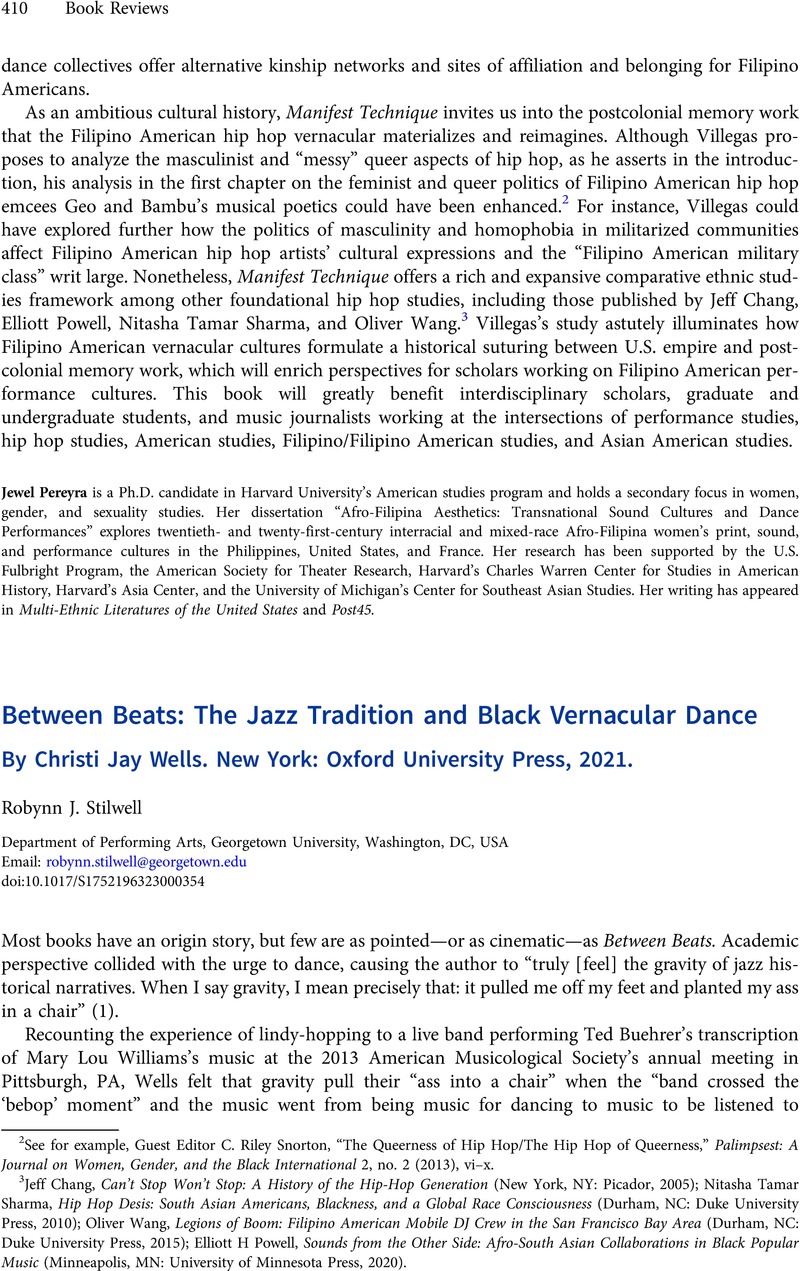No CrossRef data available.
Article contents
Between Beats: The Jazz Tradition and Black Vernacular Dance By Christi Jay Wells. New York: Oxford University Press, 2021.
Review products
Published online by Cambridge University Press: 16 November 2023
Abstract

- Type
- Book Review
- Information
- Copyright
- Copyright © The Author(s), 2023. Published by Cambridge University Press on behalf of the Society for American Music
References
1 Williams, Diana, “Can Quadroon Balls Represent Acquiescence or Resistance?,” in Gendered Resistance: Women, Slavery, and the Legacy of Margaret Garner, eds., Frederickson, Mary E. and Walters, Delores M. (Urbana, IL: University of Illinois Press, 2013), 126Google Scholar.
2 Clark, Emily, The Strange History of the American Quadroon: Free Women of Color in the Revolutionary Atlantic World (Chapel Hill, NC: University of North Carolina Press, 2013), 148Google Scholar.
3 In addition to his work as a writer and broadcaster, Stearns founded the Institute for Jazz Studies, was a consultant to the U.S. Department of State's jazz diplomacy tours in the 1950s and 1960s, and co-authored Jazz Dance: The Story of American Vernacular Dance (New York: Macmillan Publishing Company, 1968) with his wife Jean, who completed the book after his death.
4 Hill, Constance Valis, Tap Dancing America: A Cultural History (New York: Oxford University Press, 2010)Google Scholar.
5 Ramsey, Guthrie P. Jr., Race Music: Black Cultures from Bebop to Hip-Hop (Berkeley: University of California Press, 2003), 4Google Scholar.


